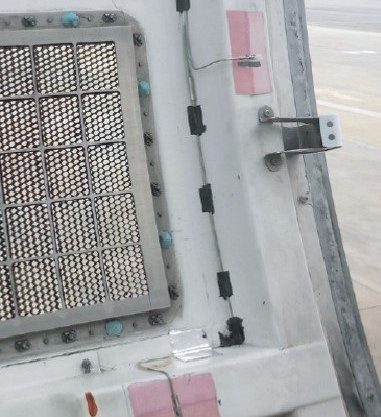Detecting an anomaly
Act on the color to signal an incident
Our smart coatings are capable of changing color and/or luminescence to detect an anomaly in real time or by memory effect.
We put our 15 years of expertise in color intelligence at your disposal to develop safer technologies.
The aeronautics, space and defense sectors are at a turning point in their history: societal acceptance, environmental and now health issues, deployment of services, on-board connectivity, flight data enhancement, new architectures, increased international competition...
As proof, disruptive projects are flourishing, proposing a different vision of aeronautics combining safety, economy and ecological transition.
In this context, materials with enhanced properties have a special role to play. Our teams are already working with many manufacturers in this sector. The options for creating devices that interact with their environment (sensors, indicators, components, etc.) are limitless.
We can customize materials to react to temperature, light (photochromes and luminescents), pressure, or a presence of a solvent or a gas.
Reveal an impact on a composite

The use of composite materials is constantly increasing in the aeronautical, space and defense fields (airplanes, helicopters, engines, missiles...) because of their high stiffness and specificity which allow to realize lighter and more efficient structures, a great flexibility in the design, and a high fatigue resistance.
How to ensure the health control of these composite structures? There is a risk of impact during transport or during assembly. It is possible to detect possible damage by ultrasound, but this phase is very long, about two hours per square meter.
In collaboration with the Airbus group, we are developing piezochrome coatings whose optical properties change according to the pressure. The objective is to develop a paint capable of identifying with the naked eye any impact above a given threshold. If necessary, the detection of damage is associated with a change in color and/or the emission of a luminescence signal.
The objective is to create a first level of monitoring from the piezochromic properties, allowing a controller to quickly detect a suspicious impact. Ultrasonic inspection would then be limited to only those areas that are useful and likely to be damaged, thus saving considerable time.
Monitor for abnormal temperature elevation

The increasing use of composite materials makes it necessary to track down the accidental occurrence of an abnormal rise in temperature. In this context, our teams have developed heat-sensitive coatings capable of detecting a localized overheating condition on a part close to hot areas, such as an engine hood.
The aim is to improve safety and to quickly identify an incident, such as a hot air leak, in order to anticipate a maintenance action.
For Sophie Senani (former Research Engineer in surface treatment at the Airbus Research Center), "Heat-sensitive technology has been around for a long time, but the chemistry developed by OliKrom provides greater precision of the temperature transition threshold and more resistant performance in terms of longevity, which is essential in aeronautics."
One of the challenges of this development was to develop a thermochromic paint with two irreversible detection thresholds. Molecular engineering programming of the materials made it possible to adjust the first irreversible color change to 120°C and the second to 140°C.
A validation plan was then successfully carried out, enabling the technology to be deployed in real flight conditions on an A320 plane.

OliKrom technologies have been studied by ArianeGroup since 2018. Two proofs of concept have already been carried out to validate the de-molding of composites and then to detect corrosion preventively. This third project concerns plastic deformation and is more specifically part of the ArianeWorks program, an acceleration platform designed to intensify the development of future civil launchers, launched by ArianeGroup and CNES.
"The added value of the OliKrom team is first and foremost its high level of technical expertise based on its extensive experience. A second asset is its agility, the incremental approach that allows us to test solutions very quickly. Finally, on a more personal note, I also appreciate the humility of the staff and the frankness of the discussions", says Philippe Briant of ArianeGroup's Research and Technology Department.
![]()
CONTACT US
We will get back to you as soon as possible..
"*" indicates required fields

